
Understanding The Best Product Label Types
Picking the best label machine for your merchandise might not be the first thing that comes to mind when you’re developing a new product, but it’s a vital part of the design process. There are essentially limitless options for packaging and labeling, no matter what your business is or what you’re selling. The best product packaging depends on using the right type of label machine for your needs. If you’ve narrowed down the options for your product’s ideal packing, it’s time to think about what your ideal label might look like--and the best automatic labeling machine to apply it.
You have many different label types to choose from, such as pressure-sensitive and shrink-sleeve. You’ll also determine a location on the package container, whether it be top, wrap-around, or front-back. This can significantly reduce costs and boost productivity. No matter what the decision may be, be sure to speak with a reputable label machine supplier such as Pack Leader USA to learn about choosing a labeling machine. Once that’s settled, it’s time to decide on your type of label applicator.
Talking with a good label supplier like Pack Leader USA is the best way to understand your best labeling options. We can walk you through the different label types, materials, sizes, and application methods. But first, let's take a closer look at the labels themselves.
Choosing the Ideal Product Label
There are many factors to consider when in the label selection process. For example, two of the most common label types are pressure-sensitive and glue-applied labels. Each type can be broken down into different subtypes, including face material, adhesive, and release liner.
Product Label Face Materials
The label face is the exterior of the label, which can be either paper or plastic. Papers come in highly glossy premium coated, glossy, or uncoated options, while plastic labels may be made of polypropylene, polyester, vinyl, mrPVC, or polyethylene. Each has advantages in cost, strength, and flexibility.
Product Label Adhesives
There are different options for label adhesives including water-based, hot-melt, rubber, or acrylic options. You’ll want to choose based on the environment of the product and its production. Important considerations include the adhesive’s performance in chillers and freezers; resistance to moisture, UV light resistance, durability; and whether you want the label to be permanent or removable. It’s important to note that removable adhesives remain in their initial state of adhesion and can be removed or repositioned later, while more traditional labels go through a curing process and will become stronger after application.
Product Label Release Liners
The release liner is the substrate on the back of the adhesive-backed label face. For example, paper liners are coated with silicone to keep the label in place until they are ready to be released onto the container. For applications at higher speeds, release liners are made from various plastics that are more durable than paper and offer built-in release properties.
The Best Automatic Labeling Machines: Key Features
An automatic label applicator is a necessary tool in any production environment. Automatic label machines save time and resources, allowing your valuable human staff to focus on higher-level tasks. The best product label machines bring the following features to the table.
Precision and Accuracy in Automatic Labeling Machines
Automatic label machines are designed with a simple priority: applying labels to products. These tools deliver precision and accuracy beyond anything a person can provide. You can count on high-quality applications for consistent results throughout your entire product run. Modern machines include advanced sensors, scanners, and other technology that verifies proper application. This reduces error rates to make production more cost-efficient.
Adjustable, Customizable Label Machines
Your product is unique, and your packaging should be, too. Luckily, today’s automatic label applicators aren’t one-size-fits-all. These machines can be adjusted and customized to provide exactly the look you desire. It’s easy to make adjustments for different product runs and designs, such as limited-edition offerings and seasonal specials. We also offer flexible label machines that can handle different labels and containers. These cost-saving options let you use the same machine for multiple products.
Durability and Reliability in Label Applicators
Our label machines are built with full-capacity operations in mind. Count on them to deliver consistent performance, even during high-volume production. They’re also designed with low maintenance and downtime requirements to keep you enjoying maximum productivity as often as possible.
Types of Product Label Applicators
You can choose from many different types of label applicators. These include:
Manual Labelers
These traditional label machines require workers to individually apply labels by hand. It is the most personal, but also the most time-consuming method.
Semi-Automatic Labelers
Semi-automatic product label machines are often operated by hand or footswitch. This method is a bit faster than using a manual machine. It consists of putting the product onto a conveyor, pressing a button to apply the labels, and then moving the product after labeling has occurred.
Automatic Labeling Machines
Automatic labeling machines offer the fastest labeling. They require the biggest investments in terms of space and cost. However, they have the potential to transform your production process. Automatic label machines come in two types – rotary label machines and in-line label applicators.
How to Choose The Best Label Machine For Your Type of Label
Once you’ve picked the best type of label for your product, it’s time to find the best label machine for the job. Remember how some types of labels are better suited for some kinds of merchandise? each type of label also has its perfect label machine. Here’s how to match the label type to its ideal machine.
Choosing a Label Machine for Paper Labels
Paper labels offer diverse options since they’re available with many different finishes and application methods. The thin paper used for labeling can be delicate, so paper labels require machines with gentle application and versatile handling. You’ll also want to take any specialized adhesives or coating into consideration since these elements can bring their own requirements.
The Best Film Label Applicators
Film labels are popular choices for applications like bottles, where you want the customer to see through the label to the contents inside. Clear, opaque, and other film styles offer a range of unique looks. Film requires careful application since these labels often need to be precisely placed on each package. The best film label machines have fine-tuned controls that deliver precision application every time.
Shrink Sleeve Label Machines
Shrink sleeve labels offer seamless, full-body application for stellar product branding. Heat-applied shrink labels provide a custom fit to a wide range of products, so they’re perfect if you have a diverse product line. Look for models with shrink tunnels and different heat settings when choosing a shrink sleeve label applicator.
Picking A Wrap-Around Label Machine
Wrap-around labels have the flexibility to adjust to varying container diameters. Like shrink sleeves, wrap-around labels work with a wide range of products. (Pack Leader USA can help you make the wrap-around vs shrink sleeve decision if you’re not sure of the best option for your needs.) A good wrap-around label machine has fast, yet consistent, wrap-around application to keep production moving at speed.
Detailed Guide to Choosing a Label Applicator
Before determining the label applicator type you are going to use, you’ll need to consider factors like:
- Container size
- Container shape
- Number of labels to be applied
- Where labels are to be applied
- Speed of production
It's easier to narrow down which label applicator you need once you understand your basic requirements. Here's a useful breakdown of label machine types:
![]()
All About Wrap-Around Labelers
As the name suggests, wrap-around labelers apply labels around cylindrical containers. These machines come in many different varieties, including portable versions, automatic versions, those designed for horizontal labeling, pressure-sensitive labeling, and customizable variations. This makes for a perfect bottle-labeling machine or machine for labeling jars.
Wrap-around labels are ideal for round containers like medicine bottles, condiment jars, craft beer labeling, and more. Wrap-around labels are a great choice for products without a “front” or “back” side. You can take a traditional approach to label design or highlight your brand’s creativity with seamless designs that flow around the entire container. The choice is up to you.
![]()
Top-Labeler Machines
Rather than fully wrapping around the product, a top label only covers the top of the container. We offer a wide range of top label applicators including portable, modular, clamshell, and tabletop variations. You can even upgrade some machines as your business grows, making our top label machines a wise investment for start-ups, entrepreneurs, and small businesses.
Top labels are ideal for most products. After all, almost everything has a top. You can use a top label automatic applicator for labeling trays, boxes, chipboard containers, bags, lids, bottle caps, and much more.
![]()
Explore Top & Bottom Labelers
Top & bottom labels also label both sides of a container without wrapping all the way around it. Machines such as the Pl-221 top and bottom labeling machine are flexibly designed to apply pressure-sensitive labels to the container. Even better, it’s easy to make adjustments and operate our dual top & bottom label applicators.
The PL-221 is an exceptional choice for simplifying top and bottom labeling jobs. You can label your product in a single pass with both labeling heads working simultaneously. This saves time and other resources compared to the alternative of sending each package through two separate machines. Top & bottom labels are great choices for many items like beauty products, coffee canisters, cleaning solutions, and more.
![]()
Choosing Front & Back Labelers
Front & back labelers, like the PL-521 horizontal wrap around labeling system, are designed to work with horizontal labeling for slim and non-freestanding cylindrical containers. An angled roller conveyor is used to secure the product on its side as it moves through the label head. This delivers accurate labeling on all your products, even slim and narrow items that may challenge other machines.
Some common examples of front & back label applications include pens, test tubes, syringes, markers, and lipsticks.
![]()
The Best Shrink Sleeve Labelers
Finally, we offer high-speed shrink sleeve labeling machines for full-body sleeve labeling applications, neck and cap banding, and tamper-evident applications. Tamper-evident neck wrappers are perfect for pharmaceutical, beverage, beauty, and self-care products.
You can explore several machine models for this type of labeling, such as the SL-10, SL-77, and SL-301. These label applicators all provide the same style of shrink sleeve labels. The main difference between machines is the size of the label and the speed of application.
The Final Choice: Selecting The Perfect Label Machine For Your Products
Now that you’ve decided on the best label and type of machine for your products, you’re almost ready to choose the best automatic label applicator for your business! You’re in the ballpark and it’s time to keep narrowing down the options.
Think about the number of labels that will be applied to each container, the label location(s, and the sizes of your containers and labels. Some additional factors to consider are production speed, compatibility with your other equipment, and price.
Determine the maximum label size you’re going to use, then think about the label orientation. This will help you land on the size of the machine you’ll need. Once you've picked your labels and know how you want them applied, then you can further narrow the specifications of the machine you would like to use. Choosing the right labeling machine for your needs is crucial for successful product labeling. You can download our free guide to learn more.
Special Focus: Shrink-sleeve Labels
While glue-applied or pressure-sensitive labels are a traditional choice, shrink-sleeve labels are a more modern option. A full-body shrink-sleeve label is a pre-printed tube of thermoplastic material placed around a container, and then heat-shrunk into place. These are growing in popularity: the market for these labels was $15.29 billion in 2022 and is expected to grow to $24.66 billion by 2033. Shrink-sleeve labels are popular in the beverage industry, where their waterproof properties and contribution to package strength are highly valued. But they're also used in non-beverage packaging.

Here are some shrink sleeve label advantages:
- In addition to their visual appeal, containers using shrink labels are also reinforced by a second skin.
- These labels are completely waterproof.
- These labels are also able to be easily applied to unusual shapes.
- Full-body shrink-sleeve labels give you more space to display information and attention-getting design since they cover the entire can or bottle. They may be combined with highly contoured bottles to better connect with consumers, affecting sales volume and brand loyalty.
- If you're replacing two traditional labels, or need a tamper-evident seal, shrink-sleeve labels may cost the same or less as separate labels and seals.
- Shrink-sleeve labels can save money by allowing lighter-weight cans to be used.
- Shrink-sleeve labels are simpler to apply and therefore can be applied faster.
If you've decided on shrink-sleeve labels, you'll need the right kind of label machine, combined with a heat-shrink tunnel, to apply them. Pack Leader's SL line of shrink-sleeve labelers ranges from the entry-level SL-10 for standard-sized cans, jars, and bottles, to the SL-77 for faster production, to the SL-301 for maximum speed, versatility, and flexibility for future growth.
To learn more, browse machines by label type on our website.
Talking Finances: Label Machine Budgets and Your Return On Investment
Labels perform many functions — branding, performance, legal compliance, safety, and more — so they are vital to a product’s success. A new automatic label applicator is a major investment in your business’s success. It needs physical space on your production floor, requires staff training, and represents a financial commitment. Is a new label machine worth it? Explore these budgetary and ROI considerations to help you decide.
Initial Investment and the Long-Term Benefits
Investment can drive your business’s growth, so it’s important to ensure you make the right investments. Start by comparing the cost of the machine with the potential savings it will bring. Inefficient labeling practices are expensive because they waste employee time, increase the rate of unsalable items, and can even cause on-the-job injuries. How do these costs compare to your investment in a new machine?
Next, calculate your expected efficiency gains to determine your ROI. A new label applicator can streamline production, allowing you to finish more products in less time. If your current labeling process is a bottleneck, investing in an automatic label machine can transform your operations. Investing in a new machine can save money and increase profits in the long-term.
Total Cost of Label Machine Ownership
As you make this decision, consider the complete cost of owning your own label maker. Pack Leader USA offers high-quality machines with low maintenance, parts, and support costs. However, every industrial tool requires maintenance and support from time to time. Remember to include these costs in your budget.
Don’t forget about our warranty and service agreements. These valuable programs can save you money over the life of your machine, making the investment an even smarter move.
FAQ
How Do I Know When It’s Time to Upgrade?
Labeling should not slow down your production process. If your labeling experience is holding you back and the costs are rising for upkeep and materials, it’s time to consider different machine options.
Which Applicator is Right for My Product?
Every container's labeling needs are different. The best applicator for you depends on the size, shape, material, and coverage you wish to achieve.
How Much Does it Cost?
Just as every machine is different, the cost may vary depending on which configuration you choose and the features you need. The most important number to calculate is the return on investment, which will allow you to see the savings, quality, and brand enhancement you are gaining.
What ROI Can I Expect?
Return on investment is more than just the money you are saving. Although that can be calculated too, you can also see the reduction of waste, faster production speeds, and enhanced quality of upgrades. It not only puts more money in your pocket but also makes your brand stand out stronger.
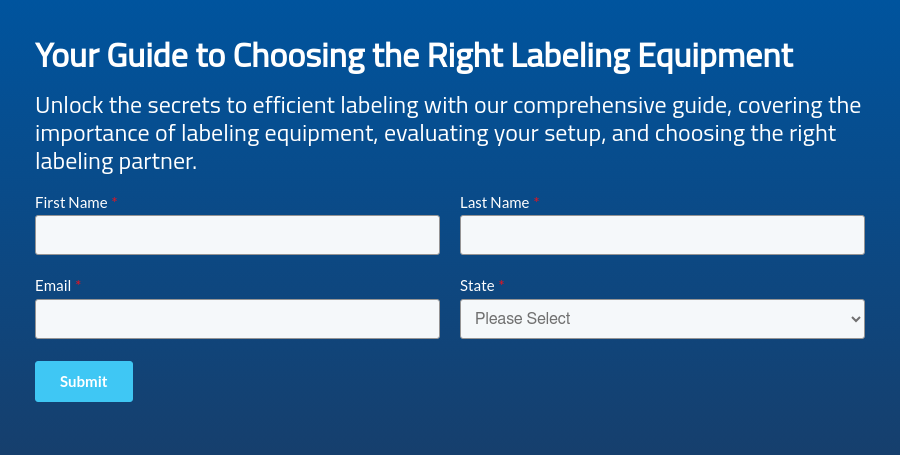
.webp?width=200&height=114&name=2x-Packleader-logo-large%20(1).webp)

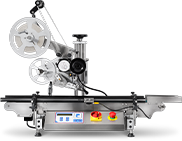
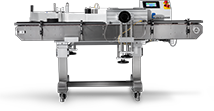
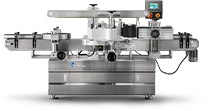
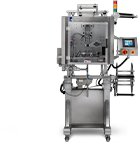
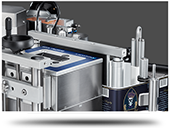
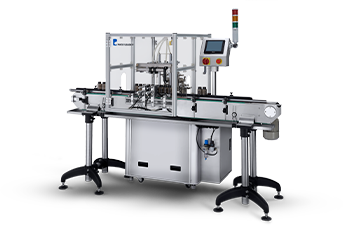
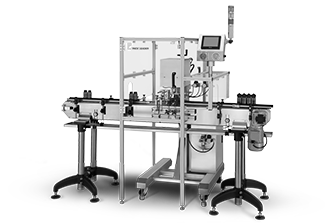
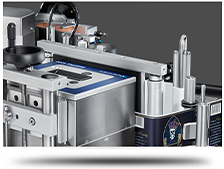






.webp?width=360&name=2x-color-logo%20(1).webp)